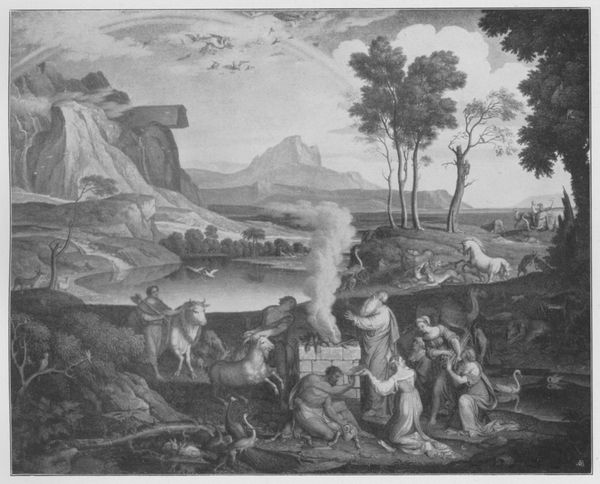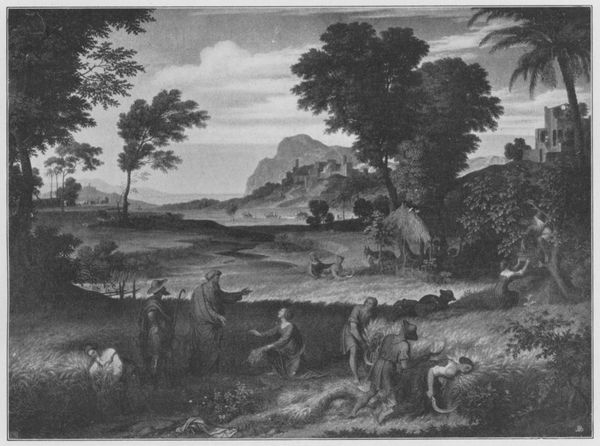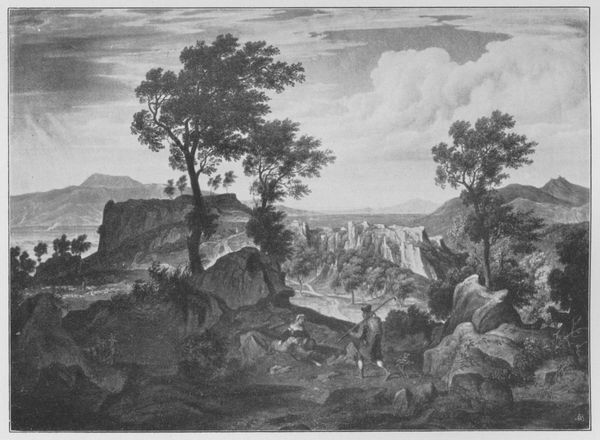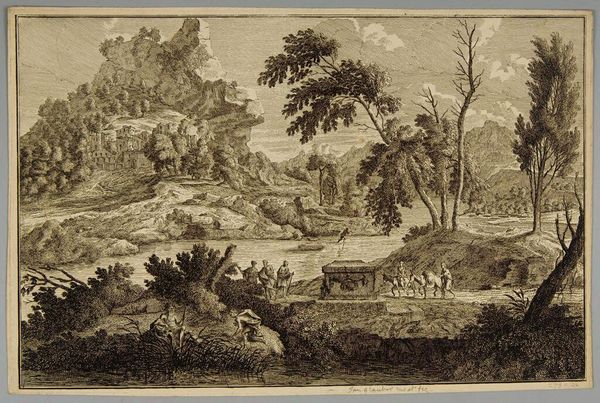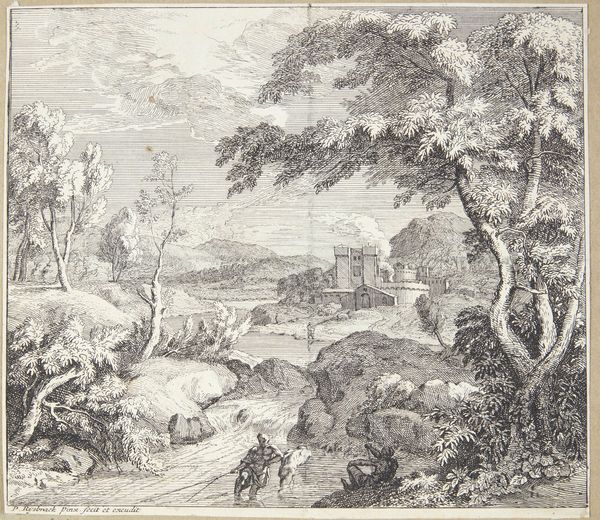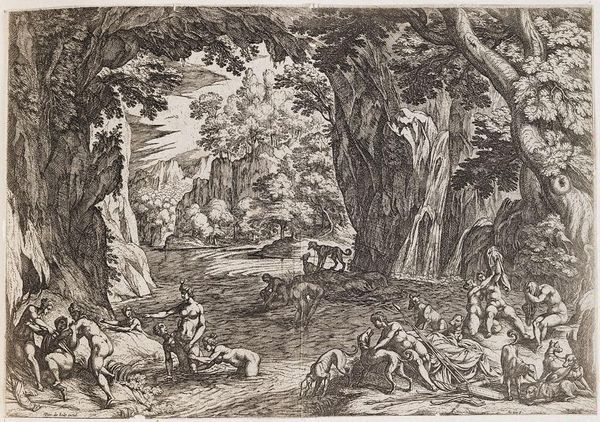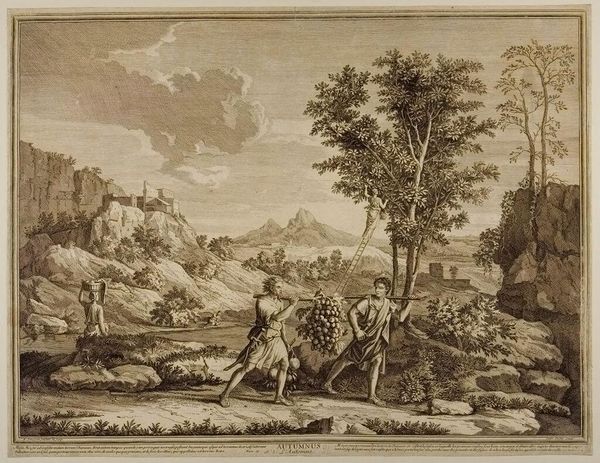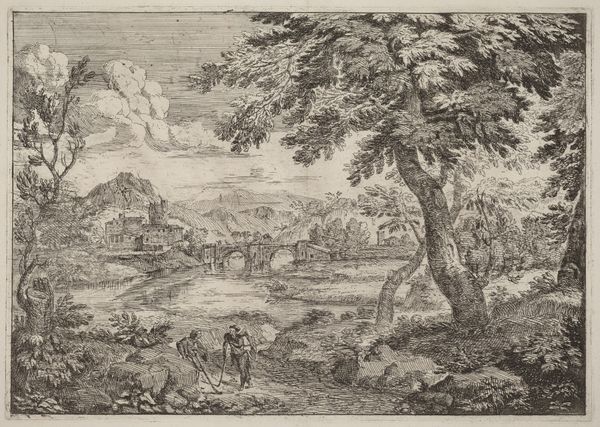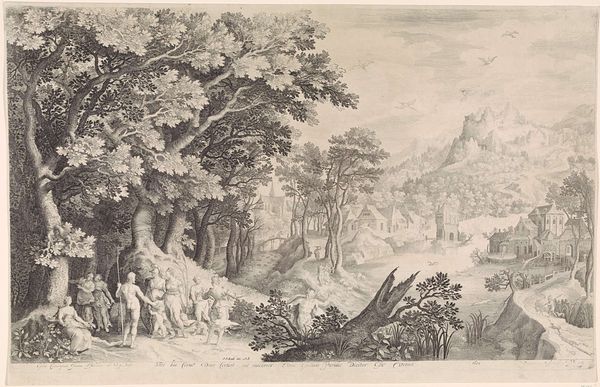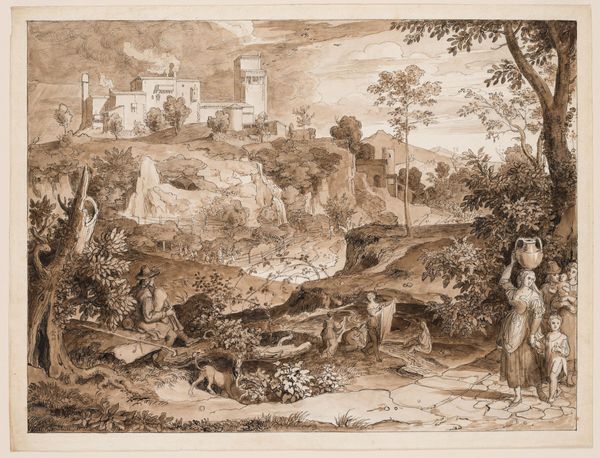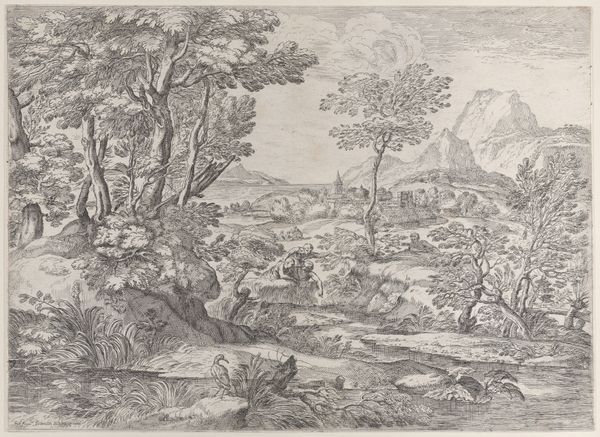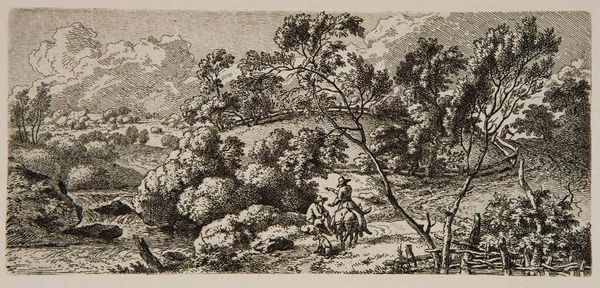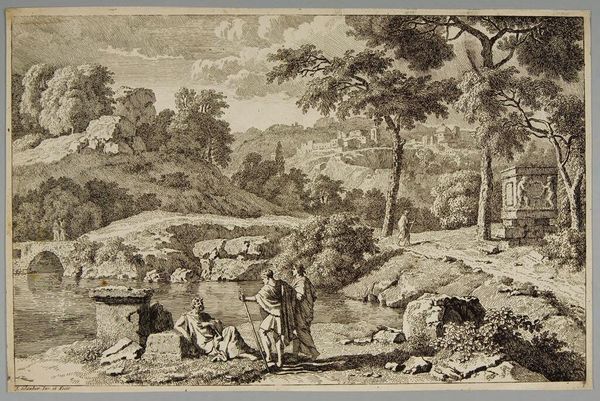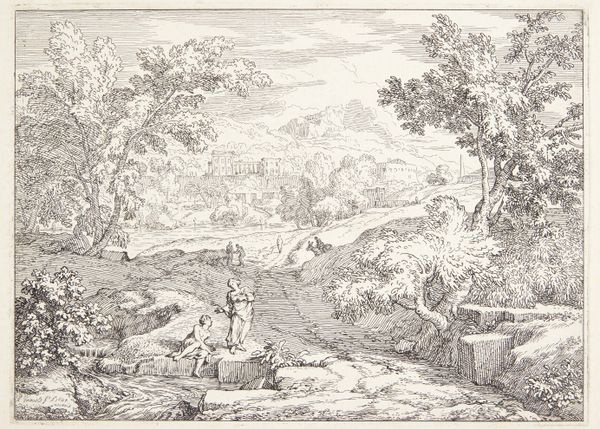
drawing, pen
#
drawing
#
landscape
#
figuration
#
romanticism
#
pen
#
history-painting
#
academic-art
Dimensions: 110.5 x 75.5 cm
Copyright: Public domain
Curator: Let's turn our attention to Joseph Anton Koch's 1834 pen drawing, "Apollo Unter Den Hirten," which translates to Apollo among the Shepherds. Editor: It has a sort of melancholic harmony to it. The arrangement is careful, creating an interesting, albeit muted, dialogue between foreground and background elements. Curator: Indeed. Koch was deeply immersed in the classical tradition, but also influenced by Romantic ideals of landscape. Here we see him constructing an Arcadian vision. Editor: The inclusion of Apollo feels symbolic. Look at the groupings of figures around him—the emphasis is on a kind of peaceful existence, a utopian idea of humans living in accord with nature. Is Koch making some comment about the political environment? Curator: Koch spent much of his career in Rome, absorbing its classical heritage, but also witnessing political unrest. There’s certainly a longing here for an idealized past, a contrast to the turbulent realities of 19th-century Europe. Note the layering of light and shadow—it directs the viewer’s gaze, creating both depth and narrative tension. Editor: The contrast between the pastoral scene in the foreground and the almost militaristic line of figures receding into the distance on the hill, that has to be intentional, to heighten that tension, no? It could almost be an assertion of an escape into an idyllic mindset as opposed to political chaos. Curator: Precisely. He uses the landscape not merely as a backdrop but as an active participant in conveying meaning. We can view his aesthetic response as a commentary of those early years of 19th-century life and his personal and spiritual existence as it related to the state. Editor: I was immediately drawn to the scale of the trees; their arrangement seems very self-aware. As much as the figures, these create points of rhythm. And notice the absence of true darkness; it softens any potential drama, reinforcing that mood of quietude. Curator: A powerful summation, one that illuminates how the material choices and visual arrangements enhance the painting’s enduring themes of paradise found. Editor: I see now that in capturing this fleeting historical commentary, this piece serves as a reminder of art's power to both mirror and reshape our perceptions.
Comments
No comments
Be the first to comment and join the conversation on the ultimate creative platform.
